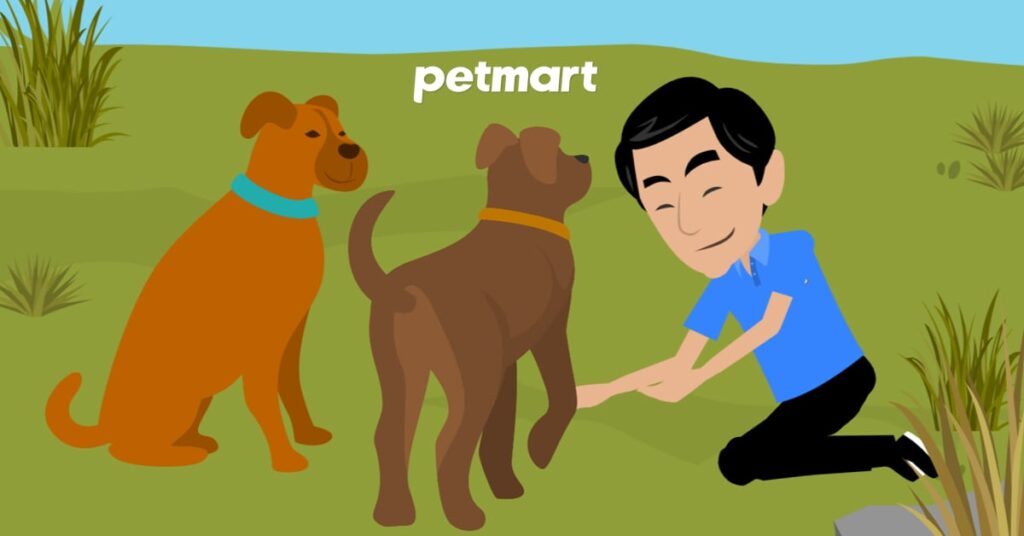- PET DOGS
- 4 Comment
Dogs with leg pain can be caused by many reasons because dogs are very active, they always want to run and play at all times. And that is also one of the reasons why they have unintended foot injuries. Many dogs with leg pain are unable to walk, including the front and rear legs. Dogs with foot pain will interfere with all activities of dogs. What will you do then? Let’s find out more with Pestate
What Causes Dog Leg Pain?
There are many causes of dog foot injury such as: dislocated dog muscle strain, misaligned joints or broken bones… More seriously, they have rheumatism that causes the dog to have arthritis . Detail:
- Dogs with foot pain due to skin lesions: such as toenails, rocks, and glasses that pierce the foot.
- Dog has leg pain due to muscle tension
- Sprained or dislocated dog’s foot: due to an accident or because of climbing stairs, when running and jumping… Severe sprains can break bones or dislocate joints
- Dogs with leg pain due to rickets: The main manifestations are digestive disorders, deformed bones, leg pain, and limp walking.
- Dogs with rheumatism: The joints and surrounding tissues are edematous, the joints are swollen, walking, and moving is difficult.
- Dogs often run and jump, active: can lead to fractures. Especially small dogs with thin bones such as Poodle, Chihuahua, Maltese …
- Dogs with foot pain caused by parasites: Parasites such as ticks, ticks, and lice bite on the surface of the skin, causing skin ulcers, bacteria easily penetrate and cause sores to spread. For a long time, paralysis, muscle weakness and other symptoms can occur.
What are the symptoms of a dog with leg pain?
In many cases, a dog with leg pain will limp. Legs always curl up, less want to be active or walk a lot. Feet appear to be swollen or bleeding. At this point, it is necessary to check the entire dog’s legs to see if they have been hit by rocks, glass or other objects that cause bleeding. If the skin is not bleeding, check to see if their feet are swollen or edematous. What is the state and color of the skin?
Need to keep the dog lying still. Do not let them work or move. Absolutely do not move and try to hold and comfort them so that they do not struggle. Feed your dog easily digestible food. Take care that the surrounding area does not become infected and the wound does not become infected.
If they have severe leg pain, a cold compress can be applied to the foot and joint to reduce inflammation. Then take the dog to the vet immediately. If your dog has leg pain due to rheumatism or calcium deficiency, , must take them to the veterinarian for examination, diagnosis and appropriate treatment. Quick and accurate diagnosis is the basis for quick and successful treatment.
How to avoid the problem of dog foot pain
- Calcium supplement for dogs suitable and complete for dogs in daily diets.
- Let your dog bask in the sun and early in the morning to replenish vitamin D. You can buy drug products to treat bones, muscles and joints at Pestate stores.
- Do not let your dog be too active or too strong. Avoid giving them intense games. For example, running too fast, jumping from above, jumping continuously …
- Take the dog for a walk or a slow jog to keep the leg joints flexible and supple. If the dog has leg pain, do not exercise anymore. Let them rest for a few days or weeks. Then let them exercise gently
- Avoid letting them come into contact with sharp objects such as glass, screws, gravel with sharp edges, thorny bushes, sharp leaves, etc.
How to recognize a dog with a broken leg?
Watch for signs of a broken bone such as deformed legs, inability to move, or difficulty moving. Accompanied by swelling, sprains or problems with functions. Dogs will often have unusual activities.
Dogs with broken bones, the outside will have obvious changes. Depending on the position of the broken leg, pelvis, ribs or spine… However, for dogs with broken legs, the legs are deformed, the four-legged posture is abnormal. Legs are shortened, lengthened or bent.
Usually they suffer from this condition due to heavy activity or being subjected to external forces. When detecting a dog with a broken leg, it is necessary to always observe the software to see if there is a wound around. Avoid allowing open wounds to become infected, which is very dangerous.
Dog broken leg what to do?
First, it is necessary to analyze the bone condition with X-ray images. It is also possible to determine where the broken bone is. Thereby the veterinarian will find the right treatment. Specific imaging will play an important role in the treatment and dressing.
Movies will be projected within a certain range. Includes head bones and peripheral joints. Only two sides are included, the front side and the side face. So if you just rely on the film, you probably won’t be able to see the fracture. It is best to capture the angles, compare and identify the broken part.
The fracture line between the bone segments can be relatively low. In many cases, fractures are usually associated with soft tissue swelling. For cases where the X-ray still cannot identify the broken bone, a few days later the affected areas can be examined again.
Can a broken leg heal on its own? How is the treatment?
To restore a broken bone to a dog, follow your veterinarian’s instructions. Depending on the severity and mildness of the wound, there are separate treatment methods. If it’s just bruises and sprains, just apply ice and a hot water bottle to the bruise. Sprains and wrong tendons will help a lot. It is necessary to give the puppy complete rest.
If the dog has a broken bone due to a fall, kick, or other animal bite, or because the wound was pierced by a sharp object, before seeking medical attention, the dog should be muzzled. cover their mouths. Then, lay the dog on its side and examine the leg thoroughly for injuries.
If the leg is clearly broken, take two flat pieces of wood that are wide and long enough to fit the dog’s paw. Place a piece of wood on the inside and a piece of wood on the outside of the dog’s paw and tie both pieces in place with a bandage. Done take the dog to the vet. If the fracture cannot be secured, place the dog on a sturdy stretcher and take him to the veterinarian. There are usually 2 ways to fix bones for dogs:
- Fixed outside: includes fixation with plaster, splint and tape. Splints and bandages do not treat the fracture, but only help immobilize the broken part. Avoid the dog being too active.
- Fixed inside: is to use nails, screws… to fix and connect fractures of bones.
Depending on the dog’s condition, choose the method to achieve the best results. In addition to the above methods, an external fixed price can also be used. However, this method is quite expensive. Currently, it has not been widely applied in veterinary facilities.
How long does it take for a broken leg to heal?
After the bandage, fix the dog’s legs, let them stay in one place. Avoid many activities, ensure that the accommodation is always clean and hygienic. Fortification of nutrition, dietary supplements, vitamins such as vitamins A, D, cod liver oil, calcium.
Let the dog sunbathe in the early morning, balance the ratio of calcium and phosphorus. Strengthens calcified callus. If conditions permit, they can be checked regularly to determine bone healing and healing. Check muscles, tendons and ligaments, always make sure your dog is comfortable. Avoid sequelae after treatment.
Treating a dog with a broken bone is a rather complicated process. Puppy bones heal much faster than adult dog bones. So always pay attention to them so that the bones heal faster. Help them quickly have fun again, run and jump. Usually it will be fixed for 3-4 weeks. Then the swelling will decrease. Bones may move slightly. After 12-16 weeks, the bones will be completely fused into a solid body. The dog has basically made a full recovery.


Thanks for sharing. I read many of your blog posts, cool, your blog is very good.
I don’t think the title of your article matches the content lol. Just kidding, mainly because I had some doubts after reading the article.
Real superb info can be found on weblog.Raise your business
Can you be more specific about the content of your article? After reading it, I still have some doubts. Hope you can help me.